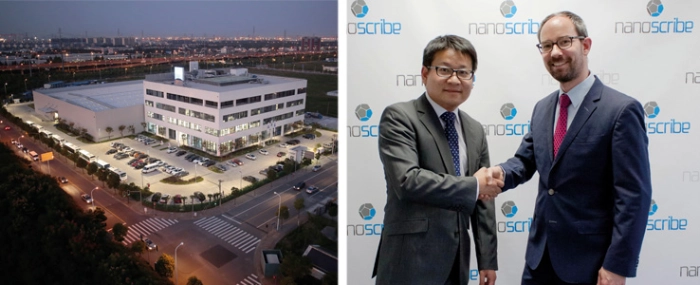
© Nanoscribe
Business |
Nanoscribe opens subsidiary in Shanghai
With the opening of Nanoscribe China Co. Ltd., Nanoscribe strives to strengthen its sales activities in China, reinforce existing business relationships, and further expand customer services across the entire APAC region.
Chief Executive Officer, Martin Hermatschweiler, is happy that the company was able to find a location with sufficient space to accommodate growth in the facilities of Carl ZEISS AG, which holds 40% of Nanoscribe's shares.
"We see a great potential in China for nano- and microfabrication, both academically and with respect to the industry. Thanks to the technological competence, excellent network and intercultural background of our Chinese subsidiary company's General Manager, Dr. Wanyin Cui, as well as the new on-site representation, we look forward to expanding our business in this rapidly growing market. Additionally, we will intensify our customer service in this region with a team led by our experienced Service Manager Johannes Konrad,” says Hermatschweiler in a press release.
Wanyin Cui has been with Nanoscribe since 2011. He played a key role in developing the business on the US market. His customers include universities, such as Harvard, Stanford, or the California Institute of Technology (Caltech). In Shanghai, he initially starts his activities with a small team consisting of two service staff members and one assistant.
In the ZEISS building, Nanoscribe China Co., Ltd. also has access to laboratory space, in which live demonstrations of a Photonic Professional GT 3D printer are showcased. These 3D printers are applied in various ways, from nanostructuring near the surface to high-precision 3D printing of objects with dimensions in the millimeter range. "We are now able to demonstrate the outstanding capabilities of our 3D printers, which are unmatched by any other technology", Cui explains.
Nanoscribe develops and sells 3D printers that are highly specialized comprehensive solutions. This includes, for example, the printing of micro-needles for minimally invasive procedures, the additive production of micro-lens arrays, as well as manufacturing of on-chip micro-optics.
